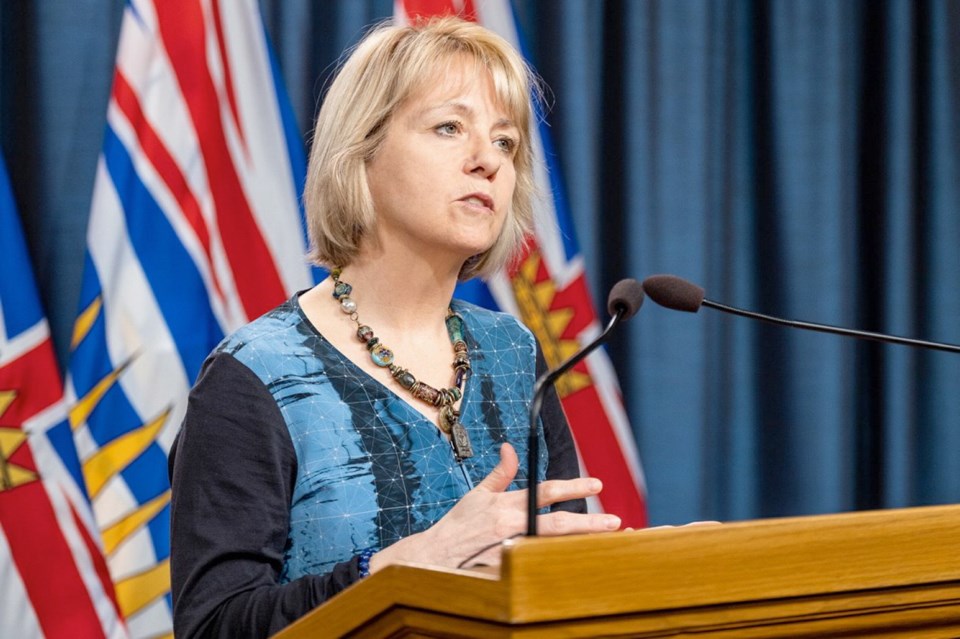Display empathy, honest and openness? Check. Demonstrate competence and expertise? Check.
Design effective messaging and stick with it?
Check.
The U.S. Centre for Disease Control has a field epidemiology manual with an entire chapter on public health communications during an epidemic crisis.
Reviewing B.C. public health officer Dr. Bonnie Henry’s performance with it in mind suggests she’s read it to the point of memorizing it.
The manual discusses how critical people’s perception of risk is. They view it depending on how likely the actual hazard is and how severe the harm might be. Their conclusions are often different from how experts are portraying it.
So warnings about the extreme hazard from an unknown virus from the other side of the world that early on was carried by a tiny percentage of the local population needed a lot of persuasive power.
That power develops from the checklist above.
While Henry and Health Minister Adrian Dix continually stress that B.C.’s encouraging pandemic statistics are the product of a society-wide effort, it takes leadership to develop that kind of buy-in, and Henry has led throughout.
After weeks of overseeing emergency orders that have wreaked a stunning amount of damage to the economy, it’s remarkable that only a small minority of people are openly critical of the measures.
When a few of them marched in protest in 91ԭ�� against them, people chucked some eggs at them.
There’s growing frustration, but B.C. is still generally holding to Henry’s line.
"Trust and credibility can greatly influence your ability to persuade persons to follow recommendations during an outbreak,” says the manual.
“Spokespersons who issue messages and information that convey (empathy, honesty, commitment and competence) are more likely to maintain and even build trust during a crisis.”
Flowing from that, the manual posts further guidance.
“Start with empathy… acknowledge concerns… recognize people are anxious.” Henry and Dix make a point of expressing condolences to the family of every single deceased victim. They repeatedly sympathize with those suffering other losses and inconvenience.
At one of her first briefings in February, she tried to set a certain tone: “Now is the time for tolerance. We call on all British Columbians to come together as a community to help one another. In this time of uncertainty, this is not only the right response, but the necessary one. Fear obstructs the important work of our public health officials to protect the health and safety of British Columbians.”
• “Identify and explain the threat.” Henry has repeatedly stressed how dangerous and virulent COVID-19 is, while trying not to induce widespread panic.
For instance, when the cases started to climb rapidly early on, she issued a careful recommendation: “Similar to how you may need to care for someone with influenza, you want to ensure you have sufficient food, medications and support in place to stay home for a number for days.”
That was repeated three consecutive days. There was still lots of panic buying, but it was already underway before the advice, and likely wasn’t as bad as it could have been.
• “Explain what is known and unknown.” Much of Henry’s daily briefings are about updating facts coming into focus, and discounting information that isn’t relevant. She’s repeatedly warned how much is unknown about the brand-new coronavirus.
• “Explain what health actions are being taken and why.” Henry has defended her testing regime in the face of considerable skepticism. She discounted the idea of face masks early on, then adjusted and mildly endorsed them.
• “Emphasize a commitment to the situation.” She’s done six-day-a-week briefings for two months straight. Her mantra: “Be kind, be calm, be safe.”
The New Yorker this week has a piece referring to the manual — in the context of how the U.S., with some exceptions, is ignoring all that advice.
A doctor told the magazine it’s also important to have a scientist leading the communications, because politicians face a heavy discount.
Dix obviously plays a key role (“100 per cent, all in”), but has been smart to put Henry up as the face of the provincial response.
He’s also following the manual’s advice.
“Share dilemmas,” it advises, on the issue of being as open as possible. When protective equipment was running low, he was forthright about it.
The two of them are making a difference.



